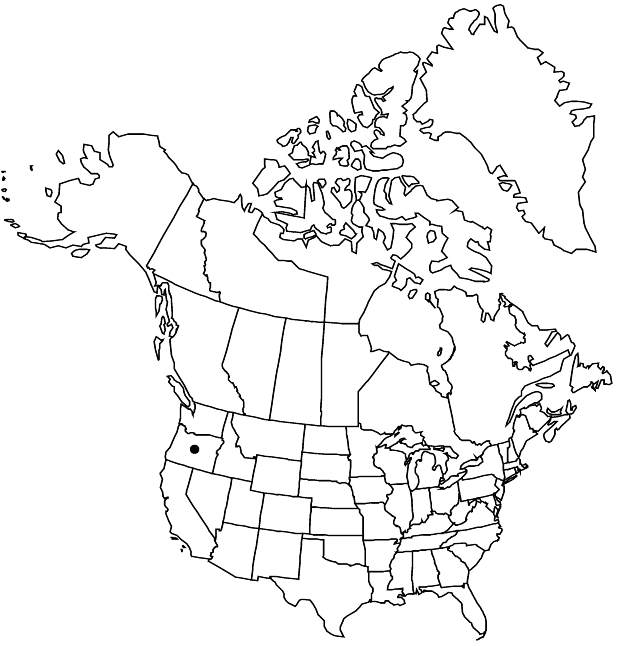Ribes erythrocarpum
Proc. Biol. Soc. Wash. 10: 132. 1896 ,.
Plants 0.1–0.2 m. Stems trailing, rooting, pubescent, short stipitate-glandular; spines at nodes absent; prickles on internodes absent. Leaves: petiole 3–5 cm, crisped-tomentose, stipitate-glandular; blade angular-orbiculate, 3–5-lobed, cleft 1/3–2/3 to midrib, 2.5–5 cm, base deeply cordate, surfaces pubescent, with sessile to short-stipitate glands, lobes cuneate-rounded, margins crenate and finely dentate-serrate, apex obtuse. Inflorescences erect to ascending, 6–20-flowered racemes, 2–5 cm, axis puberulent and stipitate-glandular, flowers evenly spaced. Pedicels jointed, 1.2–3 mm, puberulent, stipitate-glandular; bracts lanceolate to obovate, 2–4 mm, crisped-puberulent, stipitate-glandular. Flowers: hypanthium yellowish orange, broadly saucer-shaped, ca. 1 mm, puberulent, stipitate-glandular; sepals not overlapping, spreading, yellow- or salmon-tinged, oblong-rounded, 1.5–3 mm; petals widely separated, erect, yellow- or salmon-tinged, broadly spatulate, not conspicuously revolute or inrolled, 1–1.2 mm; nectary disc prominent, orangish, raised, angled, covering most of ovary; stamens as long as petals; filaments linear, 0.5 mm, glabrous; anthers yellow, orbiculate, 0.5 mm, apex shallowly notched; ovary stipitate-glandular; styles connate 1/2 their lengths, 1 mm, glabrous. Berries palatability not known, red, ovoid, 8–10 mm, stipitate-glandular.
Phenology: Flowering May–Aug.
Habitat: Mountain forests, glades, rocky slopes
Elevation: 1100-2300 m
Discussion
Of conservation concern.
Ribes erythrocarpum is found in the Cascade Mountains of southern and central Oregon. It was allied with R. viscosissimum and R. sanguineum by A. E. Senters and D. E. Soltis (2003), with R. acerifolium (as R. howellii) and R. cereum by W. Messinger et al. (1999), and with R. glandulosum by M. Weigend et al. (2002). Ribes erythrocarpum shares fairly shallow hypanthia and conspicuous nectary discs with R. acerifolium,R. laxiflorum, and R. glandulosum.
Selected References
None.
